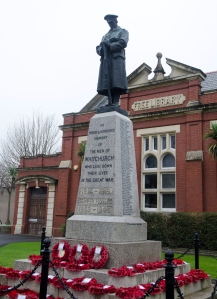I felt privileged to be asked to take photographs for my father’s book ‘Call Them to Remembrance’, as rugby and history have also been topics of interest for me. I had, of course, read about the tragic loss of life in World War I and felt keen to contribute to this piece as a way to remember those who have fallen.
But what was fascinating about working on this particular project, was learning about the individual stories of these fallen men; fine sportsmen who were struck down in their prime.
This was no more evident than in the case of John Lewis Williams. I was quick to learn that Williams had been born in Whitchurch, where I went to school and spent much of my teenage years. This suddenly struck home the reality of the tragic tale. Williams was, by all accounts, a superb footballer, and a huge loss for Wales and rugby. A true star of the game before his untimely death. Much is made of sportsmen and women today; Whitchurch is lucky enough to boast such sporting greats as Gareth Bale, Geraint Thomas and Sam Warburton, who are regarded superstars. Williams was on par with this at the time.
To emphasise the status that Williams held during his player career, last September, he was inducted into the World Rugby (formally IRB) Hall of Fame.
That I had passed this memorial countless times and barely glanced at it, barely acknowledged the names which had, over the years, just become arbitrary text, I felt I had done Williams, and the other fallen men a disservice.
I had been ignorant to the fact a great rugby player was on this memorial; but also what else had the others achieved and done in their short lives. I was struck that any of these names could have been any of the names of people I had known and befriended in Whitchurch over the years.
It is very easy to pass by these memorials and take them for granted. Working on this project made me realise that it is worth the small time and effort to sometimes pause amidst our own busy lives, and acknowledge those who fought so that we could enjoy our freedoms today.
Sian Prescott



